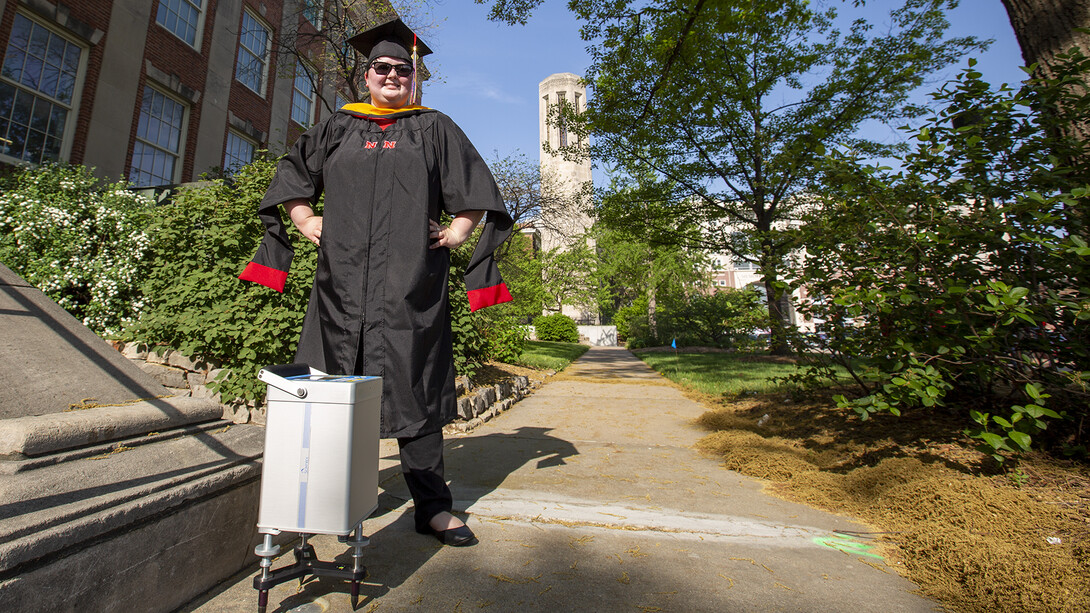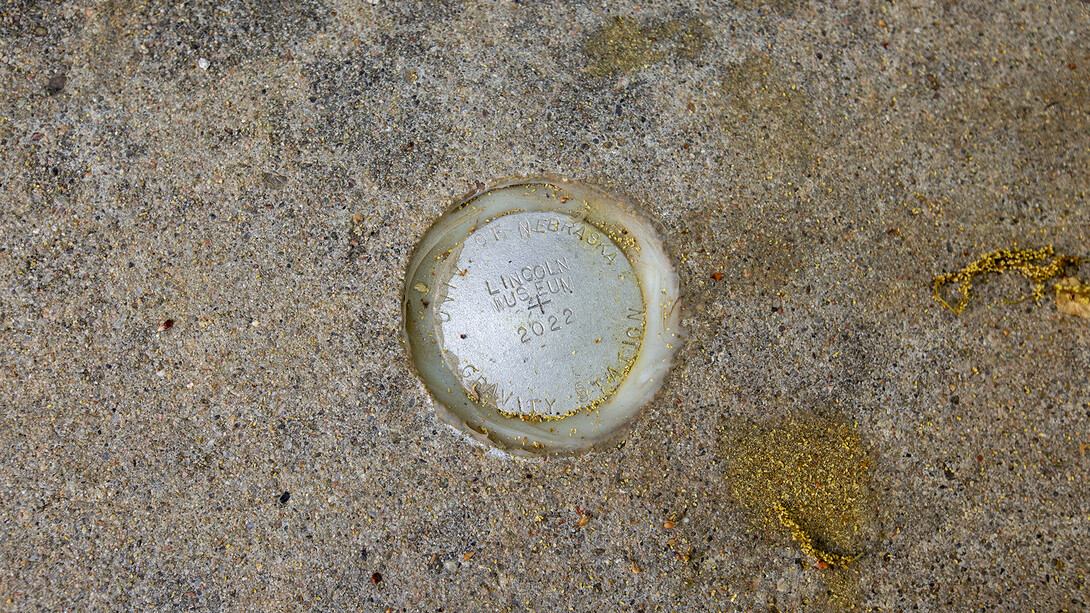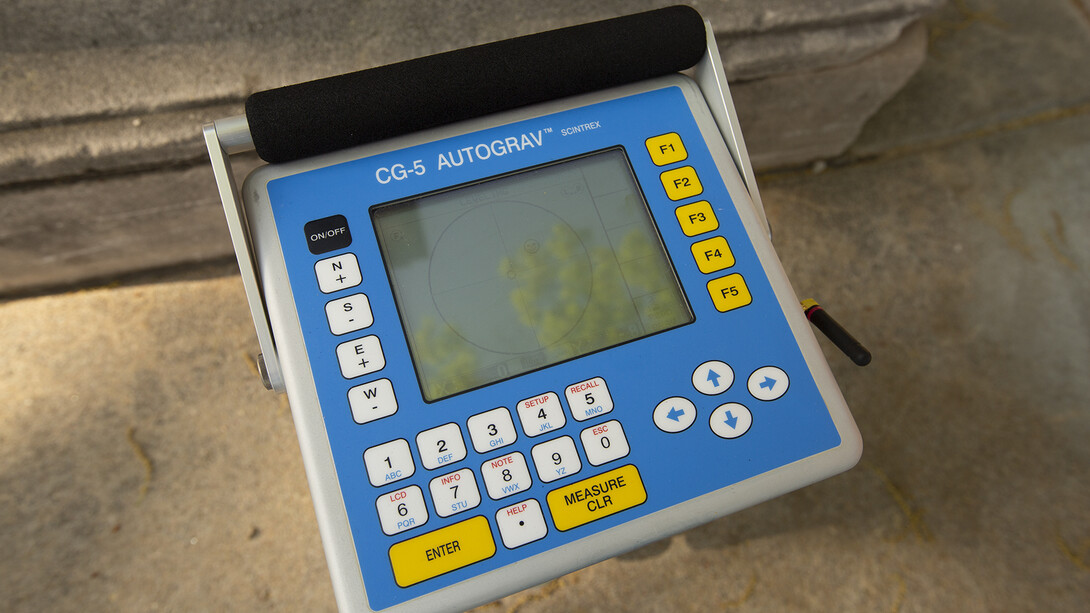
The weight of a global pandemic diverted but could not halt the momentum of Nebraska’s Kris Guthrie.
For her graduate research project, the May 2022 alum established Lincoln’s first publicly-available gravity base stations. Located at the University of Nebraska–Lincoln (near Morrill Hall and Mueller Tower) the stations will be used to support gravity surveys (including those planned by the university’s geophysics research team) and to teach students about their use.
“It’s pretty exciting because these gravity stations will be available for a very long time — way longer than my lifespan,” Guthrie said. “I’m glad to have played a role in something that will have a lasting impact on campus and the state.”

The stations are part of a network of locations where the absolute value of gravity has been recorded to a precise level — within an accuracy of less than 0.1 mGal. The stations are used by researchers to calibrate gravimeters and provide a base reading for mapping gravity fields at other locations.
Lincoln does have an unofficial gravity base station, but it is difficult to access as it is located on the tarmac at the Lincoln Airport. The nearest publicly available stations are in Hastings and Geneva.
“These gravity base stations are incredibly convenient and critical for our future plans to perform gravity surveys in Nebraska,” said Irina Filina, assistant professor of earth and atmospheric sciences and Guthrie’s adviser. “We will use them for various projects in the future, ranging from teaching and research to outreach events like Dinosaurs and Disasters at Morrill Hall.”
Guthrie had planned to establish a gravity base station on campus and start a survey near Arnold, Nebraska. The study was to focus on the mystery behind 27 seismic events that occurred near the Nebraska village in 2018.
“The idea was to go up there, do a gravity survey and see if ultimately we could map the fault that caused the seismic cluster,” Guthrie said. “Unfortunately, COVID-19 hit and we were unable to go out into the field and complete the work in time for my graduation.”
While the university community reacted and pivoted to COVID-19 guidelines, Guthrie continued to consult with the National Oceanic and Atmospheric Administration to establish the gravity base stations. Originally four sites on campus were proposed with the idea to pick the best possible location. Two were eliminated immediately as they were indoors and COVID-19 procedures could restrict access.
With the process narrowed, Guthrie started to collect data to determine which of the two outdoor sites would be best. The process included Guthrie using a gravimeter to make measurements nearly 70 times between October 2019 and November 2021 at the campus sites as well as at established gravity base stations in Hastings, Geneva and Sioux Falls, South Dakota.
The stations in Hastings and Geneva were established in January 1968. In the decades that have followed, dramatic groundwater changes have impacted gravity readings at both locations. As the measurements were considered less than confident by the NOAA, Guthrie excluded those from the final results.
“The whole process was spread out over a series of months,” Guthrie said. “And, we ended up using the Sioux Falls location based on NOAA recommendations. It’s on bedrock and is a much more stable location for measurement.”

Based on Guthrie’s data sets, NOAA selected both campus locations for inclusion as official gravity base stations.
“That was a little bit surprising, but it was welcomed news,” Guthrie said. “We worked with the university to get the base station discs placed in the concrete. It was a lot of fun watching them being officially put into place.”
Now Guthrie’s success is leading toward planning for the next generation of Huskers to perform the survey near Arnold.
“This opens the door for us to have students develop studies near Arnold and across the region,” Filina said. “Kris did a great job completing this work during a difficult time. She deserves all the credit because it would not have been a success without her determination and drive.”







